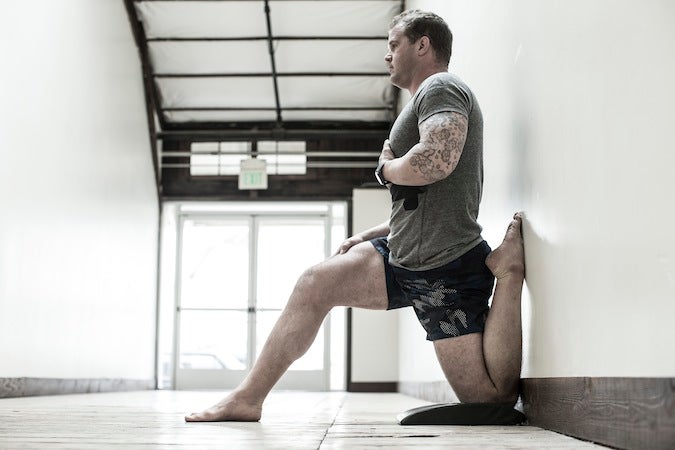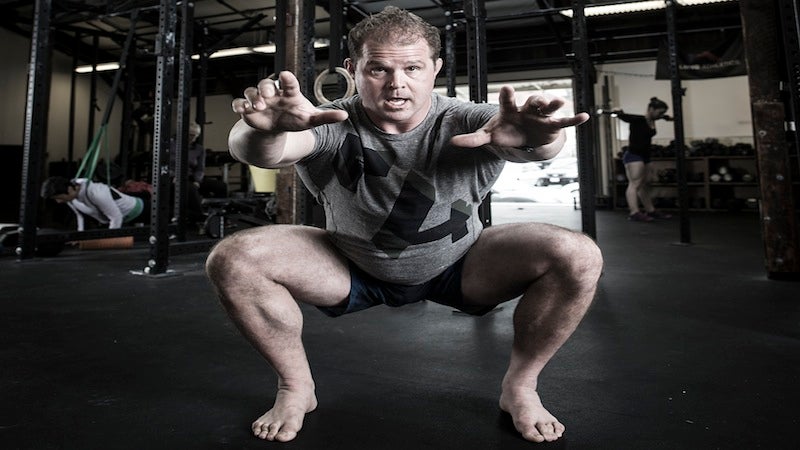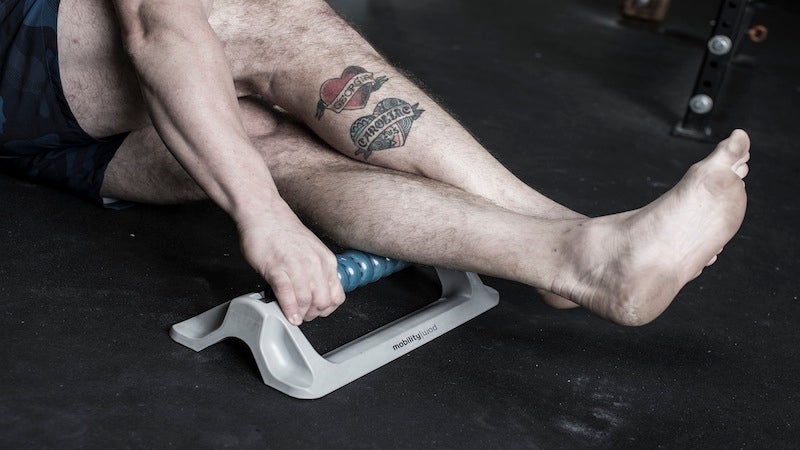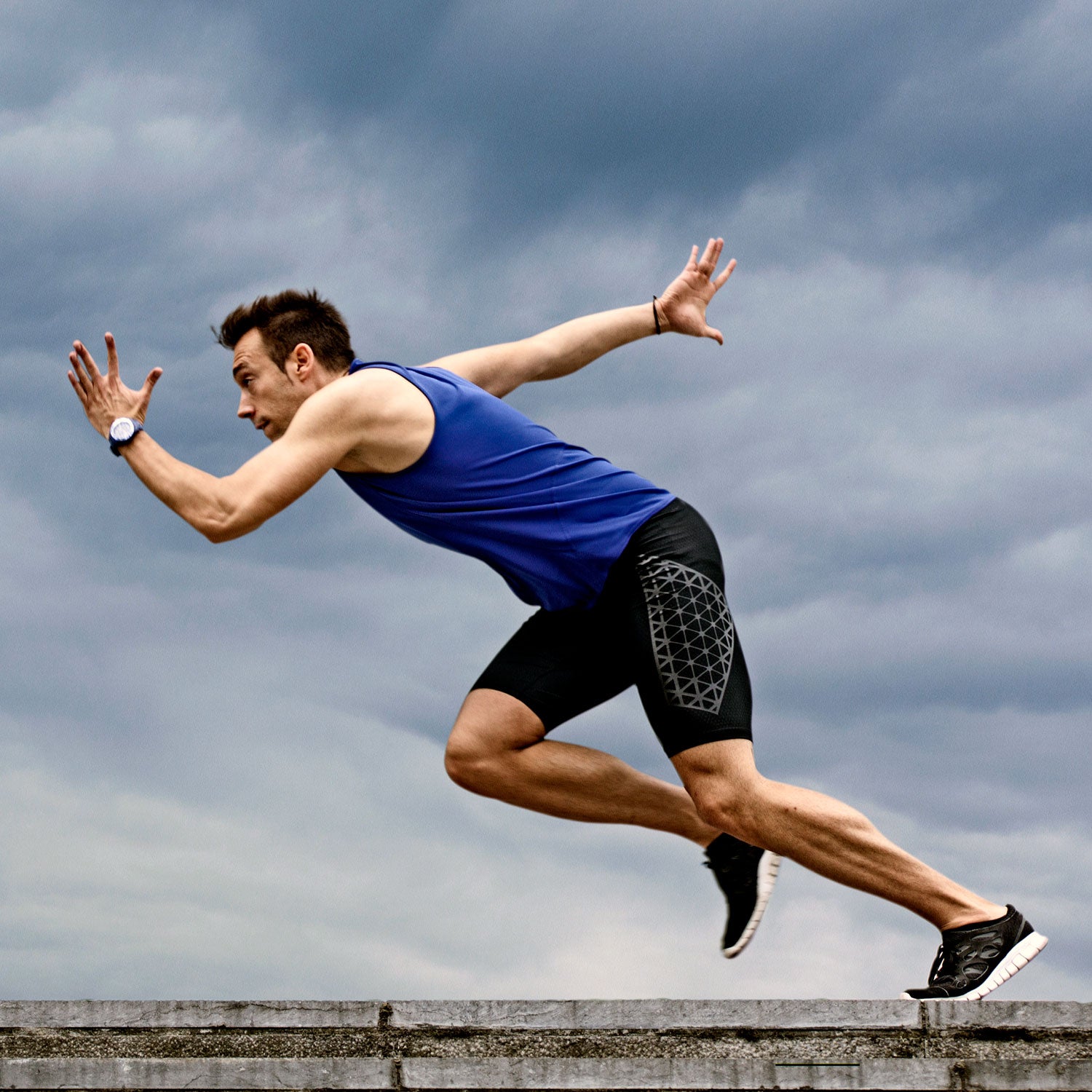Kelly Starrett is on a mission to keep runners on their feet and out of the physical therapist’s office. Given Starrett is a physical therapist himself, it may seem an odd goal. But the man who became a CrossFit hero and strength and mobility sensation through his wildly popular believes he can save runners from the to injury rate they face annually. How? By overhauling broken runners’ biomechanics.
“If your quads are brutally stiff and you end up with knee pain, you shouldn’t have to pay a physical therapist $200 and get a doctors report and take a day off for someone to show you that your quads are stiff,” Starrett says. “That is a terrible use of your time.”
The problem, he believes, is nobody’s set movement standards for runners—the stretches and simple moves runners should be able to do before they ever lace up their shoes. If you run when you can’t perform certain baseline movements, it shouldn’t be surprising when you get hurt, he says.
And don’t think you’re off the hook if you don’t log long miles. “That’s a mistake,” Starrett says. “If you play basketball, guess what? You’re a runner. You may not think Frisbee is a running sport, but it is. Running works its way into so many things we do.”
In his new book, , Starrett addresses the lifestyle and biomechanical issues that he believes contribute to runners’ terrible injury rates. Below, he shares three of the best moves to assess whether or not you’re truly ready to run; if you can easily do them, you’re good to go. “Work on these things 10 to 15 minutes a day,” Starrett says. “You have no idea how much better you’ll feel or how much faster you can go.”
Standard #1: The Couch Stretch

What it does: Opens up the hips; alleviates knee pain like patellar tendonitis; helps resolve hip and back pain; helps you maintain good posture while running and throughout the day.
How to do it:
1. Back your feet up against a wall, a box, or the upper cushion of your couch. If you’re on a hard floor, put down a cushion for your knee.
2. Slide your left leg so that your knee fits into the corner where the floor meets the wall (or whatever corneryou’re using). Make your shin flush with the wall and point your toe.
IMPORTANT: Squeeze your glutes, in particular your left glute. Keep squeezing throughout the mobilization. This will stabilize your lower back and position your hip joint correctly.
3. Draw up your right leg and post it in front of you, with your shin vertical. Tip: If you’re too tight to get into the Couch Stretch position, scale it back by positioning a box in front of you. Put your weight on the box and don’t worry about posting your leg, as in step 3. Work at this daily for at least two minutes on each side to effect the tissue change that you need to improve toward the unmodified position and meet this standard.
Standard #2: Squats

What it does: Trains your body to activate your glutes, leading to a more powerful run stride and better hip function.
How to do it: Start with the 10-minute squat test:
Then progress to air squats to develop strength while maintaining mobility:
1. Stand with your feet just outside your shoulders.
2. With your feet straight, turn on the muscles of your posterior chain—from your arches to your hamstrings, hips, and muscles supporting your trunk—by pretending that you are screwing two dinner plates into the ground with your feet.
3. Keep your heels on the ground and drive your knees outward to prevent any debilitating inward (valgus) knee movement.
4. Drop your hips below the plane of your knees without extending your knees over your feet.
5. Hang out in squat position.
Standard #3: Calf Smash and Pressure Wave

What it does: Helps alleviate Achilles, plantar, and knee pain by restoring the natural glide that should exist between layers of skin, muscle, nerves, and fascias that can get bundled up.
How to do it:
1. Place your calf on top of the roller of your choice, or a pipe or barbell. Use your other leg to apply some extra pressure and weight.
2. Relax your muscles, breathe, and sink into the roller to connect with your deepest tissues. Now move into the Pressure Wave, slowly rolling your lower leg from side to side and kneading your way into the tissues.
3. Contract and relax the tissues by flexing and extending your foot through its full range of motion.
Exercise descriptions excerpted with permission from .


